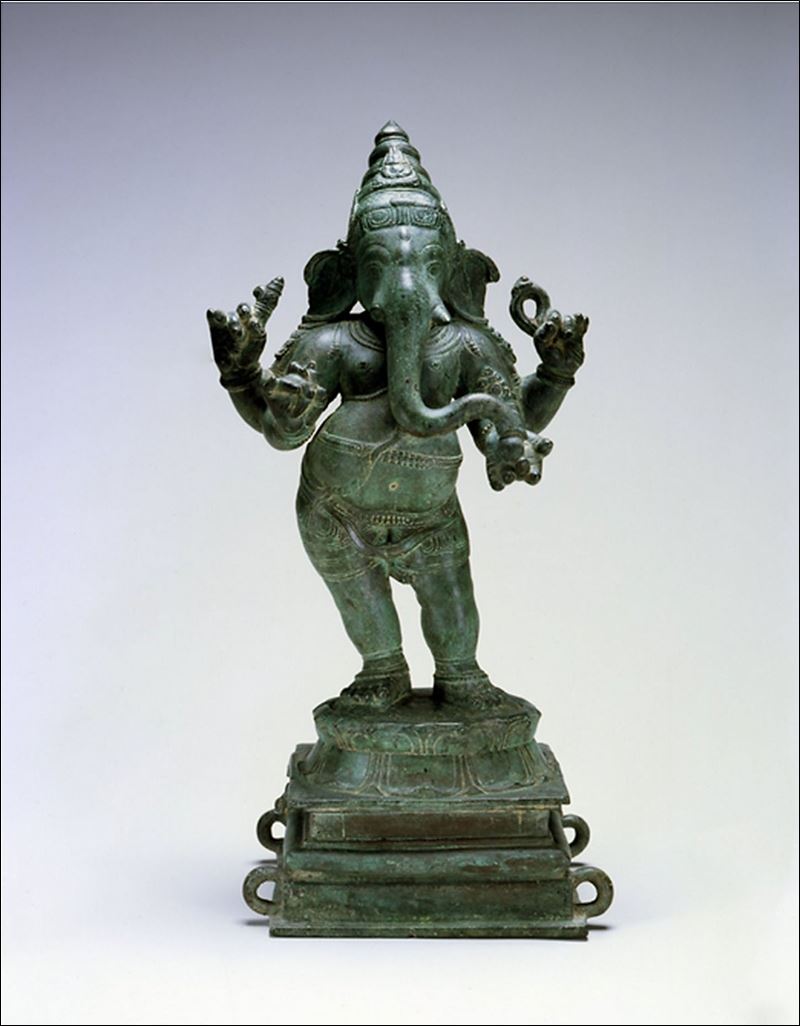 A 1,000-year-old statue on display at the Toledo Museum of Art for almost a decade will be returned to the Government of India, the museum announced today.
A 1,000-year-old statue on display at the Toledo Museum of Art for almost a decade will be returned to the Government of India, the museum announced today.
The sculpture, a bronze statue of the Hindu deity Ganesh, known as the Ganesha, has been the source of an ongoing investigation, after the U.S. Justice Department contacted museum officials regarding the statue’s history and documentation.
The museum purchased the Ganesha for $245,000 in 2006 from Subhash Kapoor, a second-generation antiques dealer, who is currently facing trial in India on charges of illegal exportation, conspiracy, and forgery. Between 2001 and 2010, the museum purchased seven other pieces from Mr. Kapoor’s Art of the Past gallery in New York City. Mr. Kapoor also gave 56 small terracotta idols to the museum.
While all of the items have been removed from public view, the Museum’s Art Committee voted in late August to return the Ganesha, after deciding the statue closely resembles a figure listed as stolen in an Indian police report.
“The evidence provided by Indian authorities was convincing. We believe the sculpture was stolen from a temple sometime before 2006,” Brian Kennedy, director of TMA said. “Any item that turns out to be stolen will be returned. That’s our policy.”
The museum insists it did adequate research before buying the disputed piece, adding that the curator personally spoke to the listed previous owner, and that museum authorities checked the Art Loss Registry for the object, with no issues detected. Carolyn Putney has been chief curator and Asian art curator at the museum since 2001.
TMA is still working with Indian authorities and other sources to obtain information on the other works it purchased from Mr. Kapoor. Museums don’t carry insurance against the loss of pieces discovered to be stolen goods.
“The museum is self insured, so normally, we would go back to the dealer, but this person is in jail,” Mr. Kennedy said. “It’s unlikely we’ll be able to pursue any recourse.”
This event marks the third time in its 114-year history that the museum has returned ill-gained objects. A 2,500-year-old water jug, housed at the museum for 30 years, determined to be looted from Italy was returned in 2012 and a figure of a mermaid holding a candy dish, the Nereid Sweetmeat Stand, was returned to the Dresden Museum in Germany in 2011. It had been stolen during World War II.
Museums across the United States have been hit with inquiries from countries rich in archaeological heritage regarding works that may have been looted. In June, the Museum of Fine Arts in Boston sent eight acquired pieces back to Nigeria after discovering they entered the U.S. art market in shady fashion.
The Cleveland Museum of Art in 2009, returned to Italy 13 antiquities it bought in good faith, but which Italian authorities said were looted, stolen or handled by traffickers. A 14th object was returned to a church near Siena, a city in Tuscany. In 2006, the Metropolitan Museum of Art handed over 21 pieces to the Italian government, including the Euphronios Krater, after determining the pieces had been removed illegally.
“Various countries are exercising their rights to inquire about pieces in American museums,” Mr. Kennedy said. “Many museums are facing this issue and as more countries decide to exercise their rights, it’s likely that this will happen again.”





